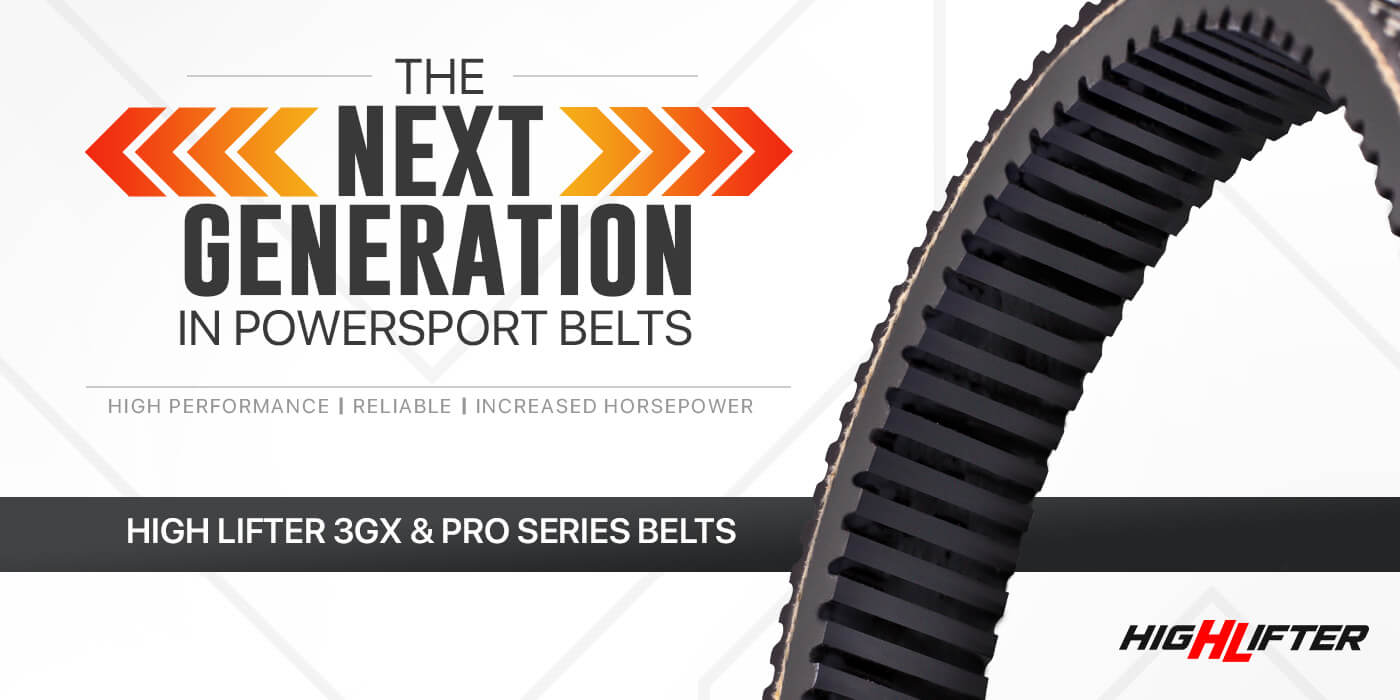
Sooner or later your ATV or UTV will need a belt changed or replaced. Offroad units carry or pull large loads on a regular basis, and those loads are normally transferred through the belt. Choosing the best belt for performance and durability can be a difficult choice with many questions. High Lifter belts take all the guess work out of belt shopping and offer a warranty.
In the business, they call CVT belts “Power Transmission Products” and High Lifter is devoted to offering the best belt design and manufacturing for customers. While there are many companies that can produce a CVT belt, High Lifter has the experience and resources to provide a belt that will survive the rigors of real riding abuse. That means endless testing of everything including cord performance, crack resistance, and flex life.
Important details of High Lifter belts are:
– Faster, more consistent throttle response at high speed
– Reduction in slippage during high levels of torque
– Increased horsepower capacity
– Proven reliable at well over 12,000 RPMs
BELTS GONE BAD – WHEN TO REPLACE YOUR BELT
There are two sure signs your belt has gone bad. The first is a whiff of burnt rubber, often causing the driver and any passengers to pause and consider the source, and possible end game scenarios. A second later the answer is usually forthcoming, with the immediate clunk-clunk-clunk from somewhere underneath a soon to be (hopefully easily) removed CVT cover. Once inside, you’ll find what looks for all purposes to be a rubber mouse nest, with cords and shredded rubber bits wrapped around CVT clutches, and clogging air ducts. It’s a mess, and there will often be belt bits scattered across the engine and skid plate as well. Remove all of it and discard appropriately. Luckily, there is a way to avoid this problem.
- KEEP YOUR CVT CLEAN – If you ride in lots of mud, dust, or water, take the cover off and blow out the entire area with compressed air.
- INSPECT YOUR BELT – Take your belt off and look for broken cords or cracks in the rubber starting at the roots of the cogs. Also, look at the sidewall for any discolored area. That is likely “spin burn”. This is from excessive heat in one area.
- CHECK FOR WEAR – Check the deflection of the belt, and follow your machines OEM specs for belt deflection. Worn edges mean the belt is not fully riding up the pulley faces, and you are throwing away performance. You can sometimes feel worn or burned spots as a vibration. If one side of your belt is noticeably more worn than the opposite side, you could have misaligned clutches. They need to pull in a straight line.
- USE LOW GEAR – Use LOW gear for pulling loads, large hill climbs, rock crawling, or any slow riding. This keeps your engine revving at higher RPMS, and your belts fully engaged on the clutch faces.
- CHECK CLUTCH WEIGHTS FOR WEAR OR NOTCHES – A sharp eye can catch potential problems early.
When you have to change a belt, take note of the direction it came off your machine. There is usually a direction arrow, and you’ll need to install it in the same direction. Also, lightly sand any built up rubber off clutch faces, and then wipe clean, but DO NOT use harsh chemicals. Emory cloth works great for this. Never use a belt dressing or solvent on a belt. Finally, use the proper CVT tool and DO NOT stretch your belt over the pulleys, and DO NOT twist your belt inside/out. This is a sure way to break down some of the cord fibers, and you’ll quickly find yourself doing all of this again.
BELT UPGRADE
Heat and dirt are your CVT systems worst enemies, but they’re the norm in the world of ATVs and Side x Sides. With a little care your belt can last a very long time. When it comes time for a replacement, CVT belts are definitely one of those areas where brand matters, and High Lifter belts provide a trusted, long term solution to your problem. Combine a premium quality belt with our limited 1 year warranty, and it’s a no-brainer!
*Information and sections of this article were taken from an article originally written by John Arens for ATV Illustrated. See original article here.
